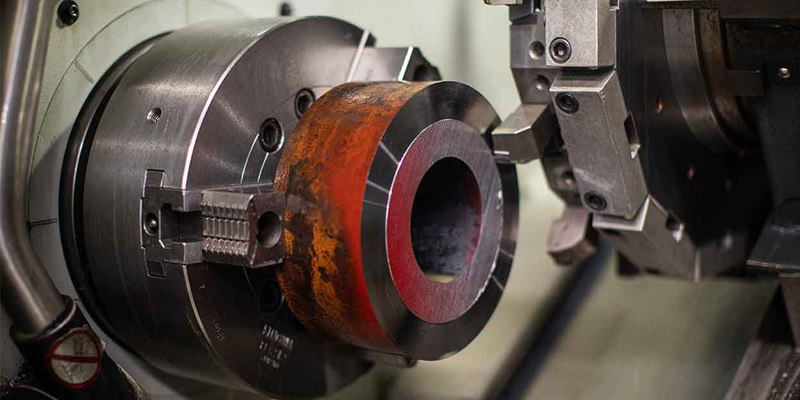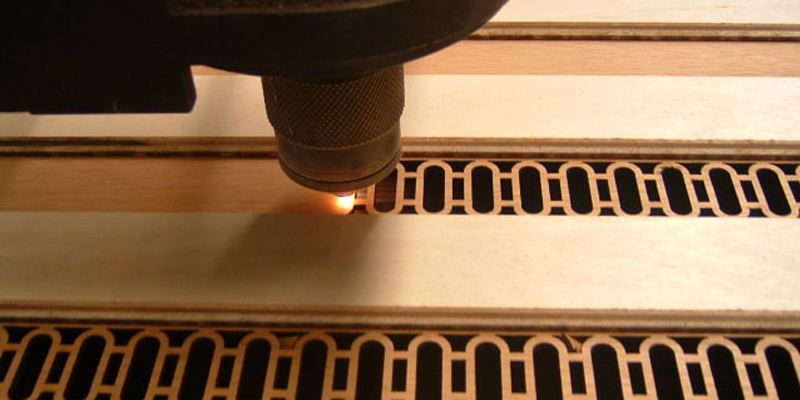What is traditional and non-traditional machining
Traditional machining and non-traditional machining (NTM) are two broad categories of manufacturing processes used to shape, cut, or remove material from workpieces. They differ in their methods and approaches to achieving these objectives:
Traditional Machining:
Definition: Traditional machining refers to a group of manufacturing processes that rely on mechanical actions to remove material from a workpiece. These processes typically involve the use of cutting tools that come into direct physical contact with the workpiece to create the desired shape or features.
Examples: Traditional machining processes include turning, milling, drilling, grinding, boring, broaching, shaping, planing, sawing, and honing, among others.
Characteristics:
Cutting tools, such as drills, milling cutters, and grinding wheels, are used.
Material removal is achieved through cutting, abrasion, or shear.
Traditional machining processes are well-established and have been in use for many decades.
They are known for their precision and ability to achieve tight tolerances.
Suitable for a wide range of materials, including metals, plastics, ceramics, and composites.
Often used for both high and low production volumes, depending on the process and requirements.
Non-Traditional Machining (NTM):
Definition: Non-traditional machining, also known as unconventional machining, refers to a group of manufacturing processes that do not rely solely on mechanical means to remove material. Instead, they use various technologies such as thermal, chemical, electrical, or mechanical-chemical processes to shape or cut materials.
Examples: Non-traditional machining processes include electrical discharge machining (EDM), laser cutting, waterjet cutting, ultrasonic machining (USM), chemical machining, electrochemical machining (ECM), electron beam machining (EBM), abrasive jet machining (AJM), and plasma arc machining (PAM), among others.
Characteristics:
NTM processes often do not involve direct physical contact between a tool and the workpiece.
Material removal can be achieved through electrical discharges, melting, chemical reactions, high-velocity streams, vibrations, or other non-mechanical means.
These processes are typically chosen for their ability to machine materials that are difficult to cut with traditional methods or to create intricate shapes.
NTM is known for precision and minimal heat-affected zones, making it suitable for heat-sensitive materials.
Suitable for materials like ceramics, glass, heat-resistant alloys, and exotic materials.
Commonly used in applications where precision, complex shapes, or the absence of mechanical tool wear are critical.
What types of processes are included in traditional machining and non-traditional machining?
Precision manufacturing: Traditional machining:

Traditional machining encompasses various processes that involve the removal of material from a workpiece to achieve specific shapes, dimensions, and surface finishes. Some of the key processes included in traditional machining are:
Turning: Turning is a machining process that involves rotating a workpiece while a single-point cutting tool removes material from its outer diameter. This process is used to create cylindrical shapes, such as shafts, rods, and disks.
Milling: Milling uses a rotating, multi-point cutting tool to remove material from the surface of a workpiece. It can create flat surfaces, slots, contours, and complex shapes. CNC milling machines are widely used for precision milling operations.
Drilling: Drilling involves creating holes in a workpiece using a rotating cutting tool called a drill bit. It is a common process in machining for applications like fastener holes and precision bores.
Grinding: Grinding is a precision machining process that uses abrasive grinding wheels to remove material and produce highly accurate surfaces with fine finishes. It is often used for tight tolerance and high-quality surface finish requirements.
Boring: Boring is similar to drilling but is used to enlarge or refine existing holes. It is often employed for creating precision bores with tight tolerances.
Broaching: Broaching is a specialized machining process used to create complex internal shapes, such as keyways or splines, by pulling a broach tool through or across a workpiece.
Sawing: Sawing is the process of cutting a workpiece using a serrated blade. It is commonly used for cutting bars, tubes, and other workpieces into desired lengths or shapes.
Shaping: Shaping is a process where a single-point cutting tool reciprocates horizontally across a workpiece, removing material and producing flat or contoured surfaces.
Planing: Planing is similar to shaping but involves larger workpieces and heavier cuts. It is used to create flat surfaces and achieve specific thicknesses.
Honing: Honing is a finishing process that improves the surface finish and dimensional accuracy of internal cylindrical surfaces using abrasive stones. It is often employed for creating precise bores with fine finishes.
Electrical Discharge Machining (EDM): EDM is a non-traditional machining process that uses electrical discharges to remove material from a workpiece. It is particularly useful for machining materials that are difficult to cut with conventional methods, such as hardened tool steel.
Lapping and Polishing: These processes are used for achieving extremely smooth and fine surface finishes on workpieces. Lapping typically involves abrasive particles on a rotating lap, while polishing uses a softer material like a polishing pad with abrasive compounds.
Precision manufacturing: Non-traditional machining:
Non-traditional machining (NTM), also known as unconventional machining or advanced manufacturing, refers to a group of machining processes that do not rely on conventional cutting tools, like drills and milling cutters, to remove material from a workpiece. Instead, NTM methods use various technologies, such as thermal, chemical, electrical, or mechanical means, to shape, cut, or remove material in innovative ways. These processes are often employed when traditional machining methods are ineffective or impractical due to factors like material properties, geometry complexity, or precision requirements.
Electrical Discharge Machining (EDM): EDM uses electrical discharges to erode material from a workpiece. It is highly precise and can be used on materials that are electrically conductive, including metals and some ceramics. EDM is often employed for making intricate, complex shapes and small, precise holes.
Laser Cutting: Laser cutting uses a high-energy laser beam to melt, burn, or vaporize material from the workpiece. It is especially effective for cutting and shaping thin materials like metals, plastics, and composites. It offers high precision and speed.

Waterjet Cutting: Waterjet cutting involves the use of a high-pressure jet of water mixed with abrasive particles to cut through various materials, including metals, stone, glass, and composites. Waterjet cutting is versatile, and it can create complex shapes with minimal heat-affected zones.
Ultrasonic Machining (USM): USM uses high-frequency vibrations combined with abrasive slurry to erode material from a workpiece. It is used for machining brittle and hard materials like ceramics and glass and is suitable for intricate shapes.
Chemical Machining (Chemical Milling): Chemical machining processes involve selectively removing material by chemical reactions. This is often done by immersing the workpiece in a chemical bath or applying a chemical mask to protect certain areas. It is used for high-precision and complex parts.
Electrochemical Machining (ECM): ECM uses an electrolyte and an electrically conductive tool to remove material through an electrochemical process. It is suitable for machining complex shapes in materials that are electrically conductive.
Electron Beam Machining (EBM): EBM utilizes a focused electron beam to remove material by melting and vaporizing it. It is used for high-precision machining of materials that are conductive and can achieve fine details.
Abrasive Jet Machining (AJM): AJM employs a high-velocity jet of abrasive particles mixed with air or gas to erode material. It can be used on a variety of materials and is often chosen for precision machining of delicate or heat-sensitive components.
Plasma Arc Machining (PAM): PAM uses a high-temperature plasma arc to melt and remove material. It is suitable for cutting and shaping conductive materials, including metals and ceramics.
Electrodischarge Grinding (EDG): EDG combines aspects of EDM and grinding to achieve high-precision machining of conductive materials. It is often used for producing complex and intricate features.
Traditional and non-traditional processes and their respective advantages and roles

Traditional Machining Processes:
Advantages:
Accuracy and Precision: Traditional machining methods can achieve high levels of accuracy and precision, making them suitable for applications with tight tolerances.
Surface Finish: These processes can provide excellent surface finishes, crucial for components where appearance or friction characteristics are important.
Versatility: Traditional machining can be used on a wide range of materials, including metals, plastics, ceramics, and composites.
Material Removal Rates: Traditional machining can be fast, especially for removing large volumes of material.
Skilled Workforce: Skilled machinists and operators are available and trained in traditional machining methods.
Roles:
Traditional machining is often preferred for producing parts with well-defined geometries, such as precision-engineered components and prototypes.
It is commonly used in industries like aerospace, automotive, medical device manufacturing, and tool and die production.
Traditional machining is suitable for both small and large production runs, depending on the process and machinery used.
Non-Traditional Machining (NTM) Processes:
Advantages:
Versatility with Difficult Materials: NTM processes are ideal for machining materials that are challenging for traditional methods, such as ceramics, glass, and heat-resistant alloys.
Complex Shapes: NTM processes can create complex and intricate shapes that may be difficult or impossible to achieve with traditional methods.
Minimal Heat-Affected Zone: Many NTM processes are non-thermal or produce minimal heat, reducing the risk of thermal distortion or damage to heat-sensitive materials.
Minimal Tool Wear: In some NTM processes, there is little to no direct tool-to-workpiece contact, resulting in minimal tool wear and longer tool life.
Environmentally Friendly: NTM processes can be more environmentally friendly because they often use fewer cutting fluids and generate less waste.
Roles:
Non-traditional machining is employed when precision, complexity, or material properties make traditional machining less suitable.
These processes are used in industries like electronics, medical devices, aerospace (for exotic materials), and when producing prototypes with intricate designs.
NTM is often chosen for low to medium production runs, particularly when traditional methods are impractical or cost-prohibitive.
In many manufacturing scenarios, a combination of traditional and non-traditional machining processes may be used to optimize efficiency, precision, and cost-effectiveness. The choice between these methods depends on factors such as the material being processed, part complexity, production volume, and the desired level of precision and surface finish. Additionally, advancements in technology continue to blur the lines between traditional and non-traditional machining, as some processes incorporate elements of both to maximize benefits.